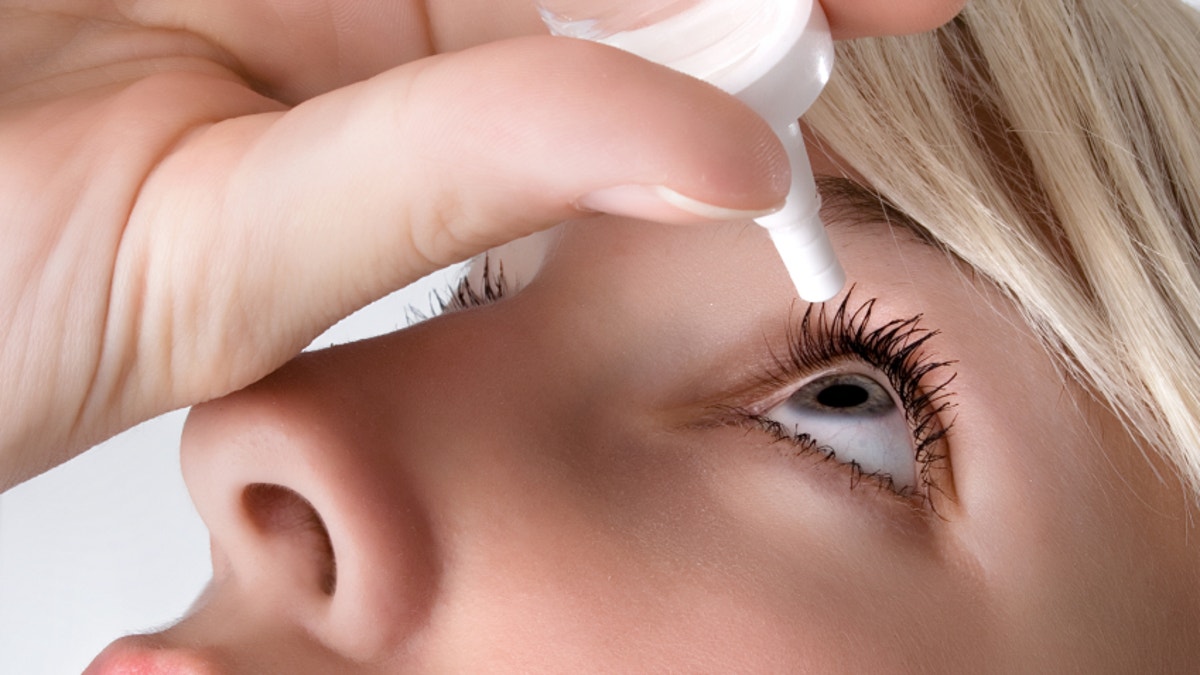
woman applying eyedroppes, close up
Tiny plugs inserted into the tear duct may safely curb the annoying and damaging effects of dry eyes, according to a new analysis of previous research.
“Plugs are generally well tolerated,” said Dr. Marcus Marcet, an ophthalmologist at the University of Hong Kong and the study’s first author. “Overall the extent of relief depends on both the type of dry eye and the type of plug.”
Patients with dry eyes who might benefit from plugs are those who have already tried eye drops and gels but still have itchy, red, painful eyes, blurred vision and the sensation of a foreign body in the eye, Marcet and his team note in the journal Ophthalmology.
About 20 to 30 million people in the U.S. suffer mild dry eyes and 9 million have moderate to severe dry eyes, Marcet notes.
“Studies have shown that dry eye significantly impacts patients’ quality of life,” he told Reuters Health in an email. “If untreated, more severe cases of dry eye can result in vision loss due to corneal scarring.”
His team’s review, sponsored by the American Academy of Ophthalmology, looked at data on tiny semi-permanent punctal plugs (which are placed in the tear duct) and intracanalicular plugs (inserted deeper into the eye duct channel), and dissolvable plugs.
Punctal plugs are usually made from silicone or acrylic polymer, while dissolvable plugs are made from collagen or synthetic material.
Both types of semi-permanent plugs offered long-term help for dry eyes, though a higher percentage of people in studies with intracanalicular plugs had more infections near the inner corner of the eyelid than did the people in punctal or dissolvable plug studies.
The few studies on dissolvable plugs reported temporary decreases in symptoms.
“The plugs are meant to slow the drainage of tears away from the eye surface (which is part of the natural tear circulation) . . . so even if your body isn’t making enough tears, we can at least try to maximize the moisturizing effect of the tears you do have,” said Dr. Roni Shtein, a coauthor on the paper from the University of Michigan in Ann Arbor.
Out of the 27 observational studies in the review, 15 measured improvements in dry eye symptoms, eye surface status, artificial tear use, contact lens comfort and tear break-up time. Twenty-five studies reported on safety.
The plugs helped relieve dry eye symptoms at least 50 percent of the time, also improving eye surface health, reducing artificial tear use and improving contact lens comfort.
Serious complications from plugs were infrequent, according to the researchers.
But 40 percent of the 1,485 people with punctal plugs reported plug loss or movement.
Other complications with the different plugs included extra tearing in 9 percent of people and removal because of irritation in 10 percent.
“The most dangerous side effect is the development of severe inflammation or infection around the plug . . . . this is quite rare, and in our review seems to be disproportionately common with (intracanalicular plugs),” Shtein wrote in an email.
Shtein noted that each study used slightly different measurements and reporting methods, making it difficult to compare results. There were also no randomized, controlled trials, which are the gold standard for studying medical devices.
Dr. Kristin Hammersmith, a corneal surgeon at Wills Eye Hospital in Philadelphia who was not involved in the study, said the review showed the effectiveness and relative safety of plugs.
“This paper kind of puts together what the level of evidence is for this being a good modality,” said Hammersmith. “But the kind of randomized control trials we’re taught to really give a lot of credence to in medicine don’t exist for punctal plugs… probably because people have used them for a long time, they seem to work and it hasn’t been too exciting for individuals or industries to sponsor big randomized control trials comparing this to not using plugs.”
Dry eyes are more common as people age and in women, Hammersmith said in a phone interview. She advises patients to try warm compresses on the eye and be careful about eyelid hygiene. Topical cyclosporine is another option.
“The patients who do very well with (plugs) are those with busy lifestyles, who have a hard time being compliant with drops, and it’s just easier if the tears are there longer and they don’t have to do anything else,” said Hammersmith.
